Ihr Warenkorb ist gerade leer!
Whitepaper Marketplace
Out of the box or outside the box
We use the marketplace at the very beginning of the design phase for the development of strategic options – in a mostly full-day workshop involving the entire team, which is best complemented by additional employees from the company.
To start with, ideas are collected on cards, usually only by keywords (the classic card sticking that you all know). At the end, we have concrete options that are not only written on a flipchart but have been approved by several participants. Discussions help to capture the ideas in the minds of employees and thus become a common good.
The procedure is fun, gives the participants a lot of freedom and brings the best ideas of the organization first onto paper and then into the minds of the participants.
Ingredients
For the marketplace to live properly, at least 12 people should attend. But it can also be up to 30.
-
Room: To do this, we take a room large enough for people to move around, group together and discuss. As a rule of thumb: Number of participants times two in m2.
The one wall is kept free to place cards – either directly on the wall or on bulletin boards. Each participant will write about 5 – 10 cards. All other walls are kept free for described flipchart sheets. - Pinboards and Flipcharts: Then we’ll provide flipcharts, about one per three participants. If the group consists of 20 people, we provide 6 or 7 flipcharts. On each flipchart are about 15 – 20 sheets prepared so that they can be filled directly.
- As preparation, we will create a description of the current activities on a morphological box . Alternatively, the eBMC can also be used (extended Business Model Canvas). This description is hung up or distributed as a big expression.
- What else do we need: Cards – about 10 per participant. The color may or may not be used consciously. Pens for each participant complete the ingredients.
Procedure
As an introduction, we again specify the characteristics of our company. A suggestion for the dimensions are:
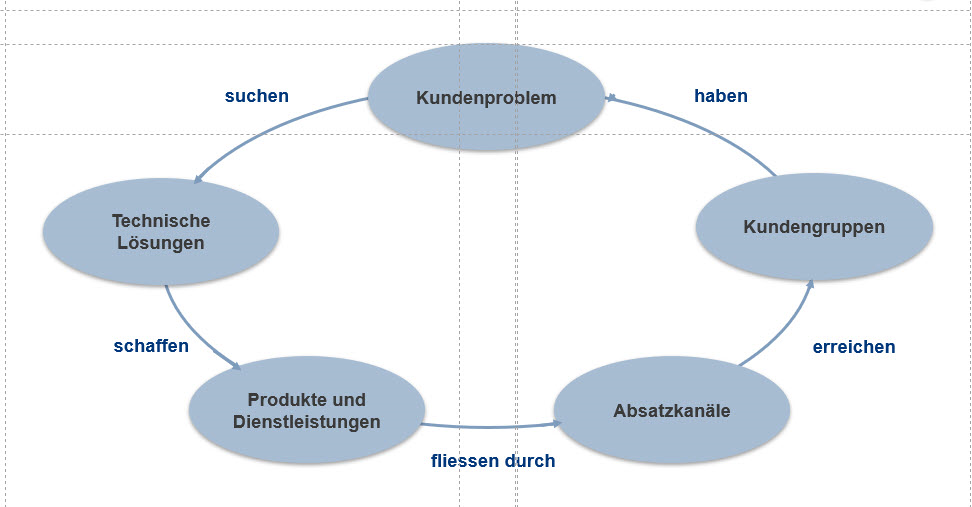
- Marktes
- Products
- Technologies
- Customer needs
- Customers and customer groups
- Sales Channels
Optionally, we list the existing characteristics and already have their first ideas:

Then we systematically search for new ideas in every dimension. You can assign the participants to the dimensions. So that one group is looking for new technologies, the next for new markets and the third for new sales channels.

To do this, we’ll go through the following steps:
Step 1
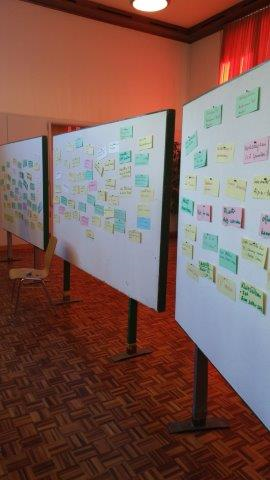
Ideas and options are written by the participants on cards and attached to bulletin boards or directly to a large wall. The cards are mixed and presented in disorder:
Step 2:
The participants briefly present their ideas and explain the background of each card.
Step 3:
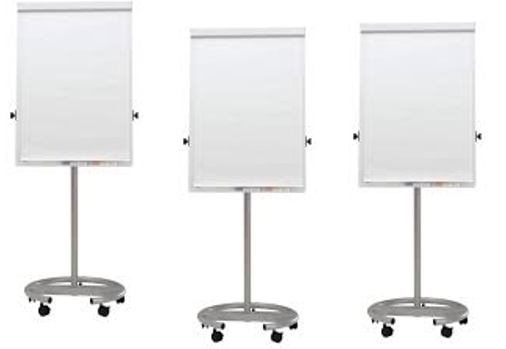
To make enouch spade in the room – all the tables are pushed against the wall, and the marketplace is set up. For each 3 – 4 team members a flipchart is set up. For a team of 15 members, 3 – 5 flipcharts are placed in the room. On each flipchart are about 15 – 20 sheets prepared so that they can be filled directly. These flipcharts are now the stalls on the marketplace where ideas are sold, as follows:
Step 4:
Each member of the team has the task to concretize his ideas on a flipchart, to discuss with colleagues and to explain them. This can be ideas that it has captured on the cards, but also new ones that have emerged from the presentation of others. The brainstorming cards are not taken away but remain in their place. The reason is that the same cards can continue to be input for new ideas. Now the author sells his idea to his colleagues and tries to convince them. These testify with their signature, i.e. the currency in this marketplace are the signatures – and of course the ideas are sold. Ideas or proposals that do not convince at least three colleagues are eliminated.
Step 5:
As soon as an idea or option has received the signatures of at least 3 people, any further discussion will be stopped. This is the task of the moderator. He removes the flipchart and attaches it in turn to the designated space on the wall of the room. We recommend to number them immediately.
Step 6:
The options listed on the flipcharts are presented by the «owners» and explained again.

Step 7:
The options thus compiled and discussed are now bundled, i.e. if there are overlaps or duplicates, then we put these together.
The next step is to capture, describe, and evaluate these options:

For the evaluation of these ideas or options, we use the instrument Adjacencies.
With STRATEY.APP these options are now captured and then further elaborated.
Collect and evaluate the strategic options in STRATEGY.APP
We record all options in the program and evaluate them according to the two dimensions
- Distance to the core business and
- Distance to success
As a result we get a list of options that are assigned to the respective business units.
In addition, we have the opportunity to load the flip charts into the program. With that we can see the origin at any time.
The Adjacency chart now tells us where each option comes from. From this we can select the strategic directions and then initiate the next steps.
See our whitepaper adjacencies
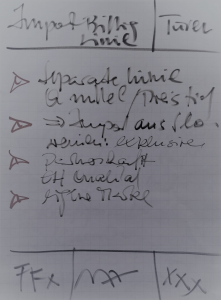
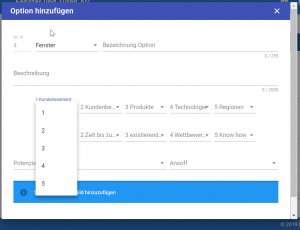
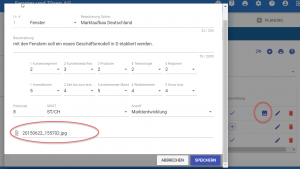
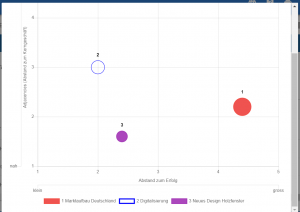
Schreiben Sie einen Kommentar